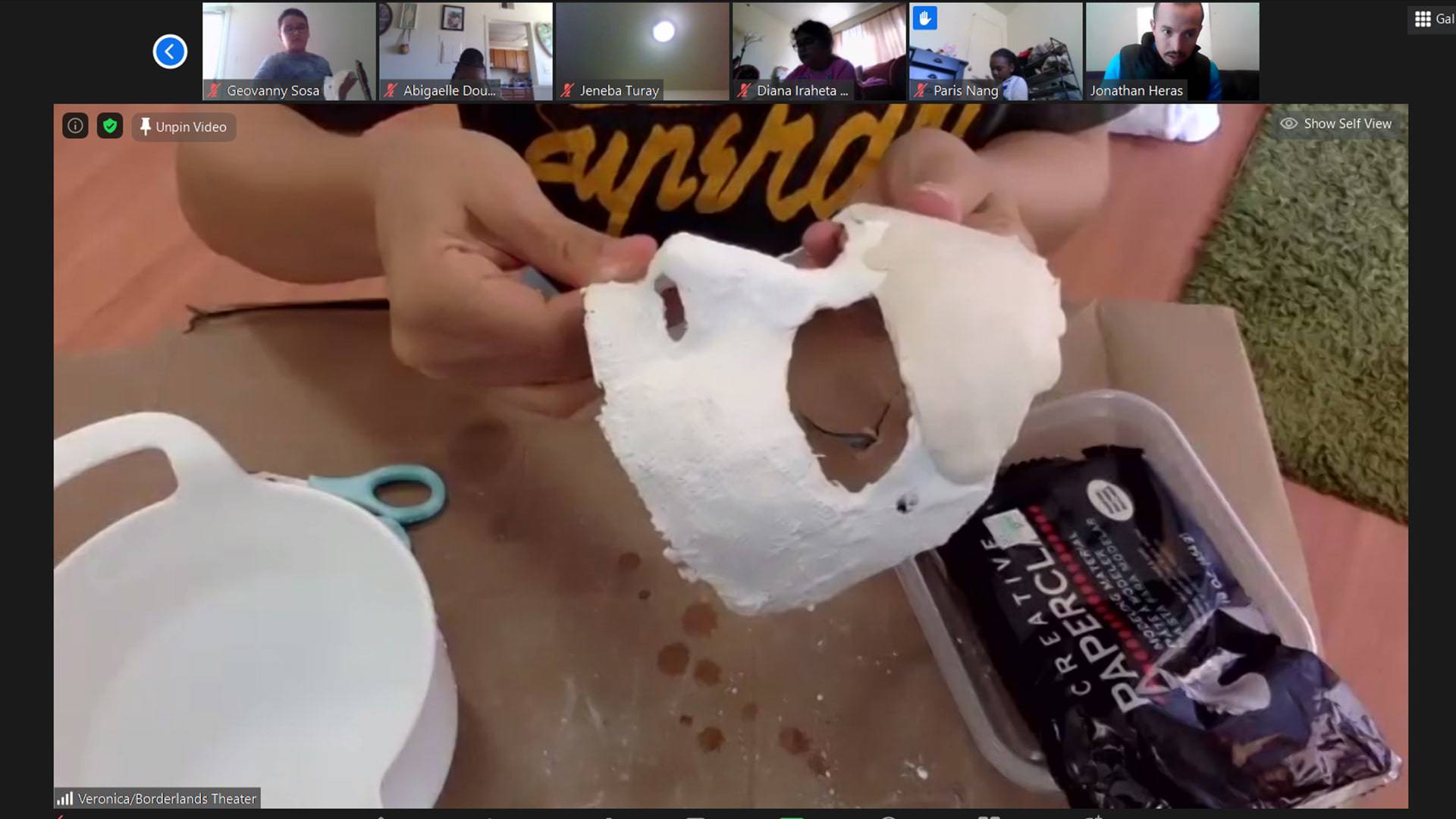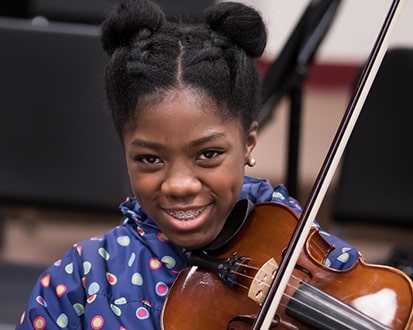How Spring Break Camp’s new format inspired deeper—and more diverse—connections in our community and beyond.
By Jamie McCrary

For 10 years Strathmore has convened teaching artists, educators, and students for Spring Break Camp at Strathmore. The program was reimagined in a virtual format this year.
Luna Morena, an experimental puppet workshop from Guadalajara, Mexico, isn’t typically on the US East Coast. But this March, they found themselves performing for an eager Maryland audience.
The internationally renowned company participated in Strathmore’s Spring Break Camp, a free annual arts enrichment program for 4th and 5th graders. Luna Morena guided students through the bilingual puppet workshop Ánima, inviting them to explore artistic expression, with body and voice, through the creation and animation of puppetry.
For the past decade, Strathmore has convened teaching artists, educators, and students from JoAnn Leleck Elementary School at Broad Acres in Silver Spring for a week-long Spring Break Camp on Strathmore’s campus. The camp was designed to be the culmination of a semester-long collaboration with Leleck, which included classes in puppetry, music, dance, and visual arts.
This year, however, the program looked a little different.

During Spring Break Camp students enjoyed hands on experiences, like this mask-making project led by members of Borderlands Theater Company.
Together with Leleck teachers and administrators, Strathmore reimagined Spring Break Camp as virtual. The program would maintain its interactive nature, focused on exploring stories and artistic techniques— but be offered to more students and include new, culturally diverse perspectives. This shift fulfilled an important goal: presenting more artists of color—and ensuring they reflected the backgrounds of participating students.
“The changes we made to Spring Break Camp this year allowed us to nourish our students in a more personal way, through language and cultural identity,” said Monica Jeffries Hazangeles, President and CEO of Strathmore. “The strength and quality of our relationships—specifically, our partnership with Leleck—allowed us to do this.”
A HISTORY OF CREATIVE COLLABORATION
For Lauren Campbell, Director of Education at Strathmore, collaboration is key. She says this is the “foundation of our partnerships. We prioritize listening to what students need so that, ultimately, camp addresses themes that are important to the community.”
In recent years, Leleck teachers and administrators expressed a need for more diverse cultural representation for students. As a school with an 85% Latino student body, students don’t always have the opportunity to work with instructors that share their cultural background.
Leveraging Strathmore’s network of community partners—and the camp’s expanded flexibility—Campbell recruited Latino puppetry and theater artists, extending her search throughout the country and beyond. This included Compañía Luna Morena from Mexico, as well as Borderlands Theater Company from Tucson, Arizona.
“Pivoting to remote learning allowed us to bring in artists from beyond our region. We wouldn’t have met Luna Morena and Borderlands Theater otherwise, so I take that as a real gift,” Campbell said.
Local teaching artists Fran Vielma, a percussionist originally from Venezuela, and Argentinian-American artist Rosana Azar also participated, coaching students in drumming and visual arts. These instructors and specific curriculum extended the camp’s focus on Hispanic culture, giving students the chance to celebrate their heritage—and themselves.
“This was huge because students can identify with these artists and build deeper connections to the program,” said Kristen Reza, a Leleck teacher and Campbell’s camp program partner. “It’s so important that our students can see themselves in their mentors.”
EXPANDING COMMUNITY IMPACT
This year also marked another significant milestone for the program. Thanks to its willing partners, Strathmore was able to extend programming to a second community organization—a first in the camp’s history—while keeping the program free of charge for all students.
Strathmore partnered with YMCA’s Youth and Family Services, a wraparound service organization for youth affected by adverse childhood experiences, to welcome 20 new spring break campers, also primarily of Hispanic decent. As an organization that’s on-the-ground with families every day, the YMCA helped fulfill the program’s larger, ongoing goal of forming extensive connections in the community, while truly serving students’ needs.
According to Hazangeles, this also supports a larger organizational goal: “We really thrive on bringing people closer to artists, and to each other, and offering programs through many perspectives. In this time of separation and isolation, it was even more critical that we deliver on that promise.”
And, as a community arts program, camp also delivered on its promise of creative impact. “As a child psychologist working nearly three decades with Montgomery County Public Schools, I know how essential early exposure to the arts is for the positive development of young children,” said Cal Leonard, whose H. Jeffrey and Carolyn Leonard Fund has made Spring Break Camp possible for the past decade. “I have seen firsthand how this interactive program allows children to expand their creativity and develop their imaginations.”
Leading with student and community needs ensures we’re not only located in the community, but really part of the community.

Spring Break Camp is a multidisciplinary program focused on exploring stories and artistic techniques.
POST-CAMP AND POST-PANDEMIC
Moving forward, Campbell hopes students walked away proud of what they learned and accomplished, with a bigger sense of their own creative capacity. Camp aims to inspire kids to continue exploring their own creativity, she said, and maybe pursue arts training in the future.
Campbell is excited to apply lessons learned from virtual camp to a traditional camp setting, and other arts enrichment opportunities for students. She’s collected feedback from students, parents, and teachers that will inform the program moving forward.
This is key in ensuring camp remains centered on student needs, she said, because “they are the experts in their experience. It’s essential we listen to their feedback.” This approach allows Strathmore to continue nurturing its relationships—both with its new teaching artists, and long-term partners like Leleck. “Leading with student and community needs ensures we’re not only located in the community,” said Campbell, “but really part of the community.”
And that, ultimately, is what Spring Break Camp—and Strathmore—is all about.
Support Bloom
We believe in creating a vibrant arts community that welcomes everyone. Your investment ensures that our programs are accessible, and no one is denied the opportunity to engage in the arts.
